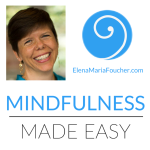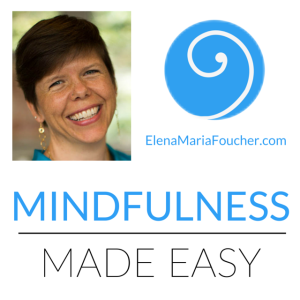 (meditation: 5:48 min) This meditation builds on the meditation called Sensational Awareness. Once you’re good at focusing on an area of sensation in the body, this practice adds noticing the emotions as well. It is very similar to Emotional Awareness (I even called it that in the recording), and the difference is that this one uses sensation as the starting point whereas Emotional Awareness focuses solely on emotions. This practice, Sensational Emotions, is a good bridge between the two.
(meditation: 5:48 min) This meditation builds on the meditation called Sensational Awareness. Once you’re good at focusing on an area of sensation in the body, this practice adds noticing the emotions as well. It is very similar to Emotional Awareness (I even called it that in the recording), and the difference is that this one uses sensation as the starting point whereas Emotional Awareness focuses solely on emotions. This practice, Sensational Emotions, is a good bridge between the two.
Instructions:
Begin by getting into position, whatever position works best for your body. This position will become your body-mind’s signal that you are starting a practice. I suggest the following:
- Sit on a chair (sofa, bed, etc) with your feet flat on the floor. Rest your hands in your lap. Feel your sit bones pressing down. Float the crown of your head up so that it softly lifts your torso into alignment. Let your back body be a bit firm to maintain this posture and your front body be soft and relaxed.
- Take a moment and look around you to ground yourself in the space you’re in (be/become aware of where you are).
- Close your eyes and bring your attention to your breath. Feel the sensations of breathing for a few breaths. This will help you be/become aware of your body.
- Find an area in your body that feels a bit tense or stiff, an area that feels “charged” to you – an area that might have an emotional component to it. If you aren’t sure, simply focus on the first area you notice that has strong sensation.
- Now notice the qualities of the area, as if you were a scientist studying it’s properties. You’ll take time to notice qualitative “facts” about it versus thinking about why it’s like this or that. In other words, you’re going to notice it’s properties and not the who, what and why of it. You’re going to notice “It’s as big as my shoulder,” and not “my shoulder hurts because I’ve been exercising too hard.” Notice things like how big it is (where are the edges?)? How dense? How sharp/dull. What texture? If you could see it what color would it be? Etc.
- As you’re noticing the area, you may notice emotions that are related to this area. Do the same with them, and simply examine their qualities, too. Notice things like how sharp or dull is the emotion? How dense is it? If it had a color what color would it be? Etc.
- Keeping most of your attention on this area, let other thoughts, sensations and emotions float through the background like passing clouds.
- If you find that your attention has become absorbed in something else and you’re no longer noticing the sensations in the area, gently bring your attention back to the area you’ve chosen.
- When you feel ready or when your timer rings, end the practice by bringing your attention back to your breath for a few breaths and then gently opening your eyes.
To Download:
Click on the Download button below.
If it does not download automatically:
- A new window will open with an audio player (like the player above).
- Right click on the player and choose “Download File” or “Download Video”
- iPhone users will want to first copy the meditation into iTunes (on your computer) and then sync with your iPhone.
Note that you are welcome to download and share this files as many times as you like provided you do so in it’s entirety and it is used for personal or educational use only (no commercial uses).

 (meditation: 6:18 min) This practice is also a classic mindfulness practice that is very old. In this practice we focus on what we can see in the space in front of us.
(meditation: 6:18 min) This practice is also a classic mindfulness practice that is very old. In this practice we focus on what we can see in the space in front of us.